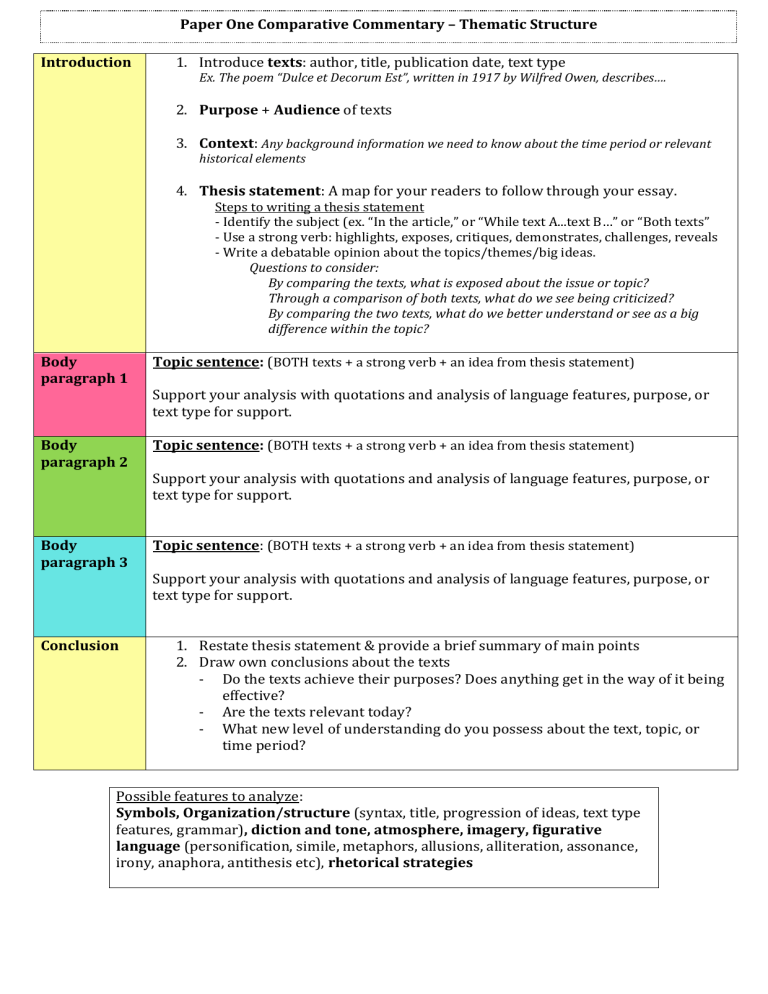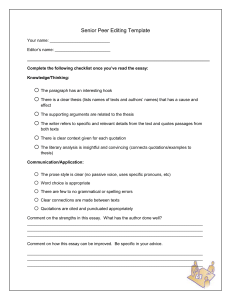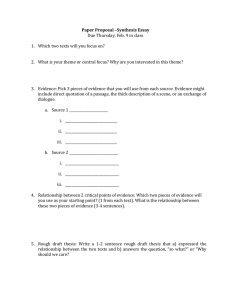
Paper One Comparative Commentary – Thematic Structure Introduction 1. Introduce texts: author, title, publication date, text type Ex. The poem “Dulce et Decorum Est”, written in 1917 by Wilfred Owen, describes…. 2. Purpose + Audience of texts 3. Context: Any background information we need to know about the time period or relevant historical elements 4. Thesis statement: A map for your readers to follow through your essay. Steps to writing a thesis statement - Identify the subject (ex. “In the article,” or “While text A...text B…” or “Both texts” - Use a strong verb: highlights, exposes, critiques, demonstrates, challenges, reveals - Write a debatable opinion about the topics/themes/big ideas. Questions to consider: By comparing the texts, what is exposed about the issue or topic? Through a comparison of both texts, what do we see being criticized? By comparing the two texts, what do we better understand or see as a big difference within the topic? Body paragraph 1 Topic sentence: (BOTH texts + a strong verb + an idea from thesis statement) Body paragraph 2 Topic sentence: (BOTH texts + a strong verb + an idea from thesis statement) Body paragraph 3 Topic sentence: (BOTH texts + a strong verb + an idea from thesis statement) Conclusion Support your analysis with quotations and analysis of language features, purpose, or text type for support. Support your analysis with quotations and analysis of language features, purpose, or text type for support. Support your analysis with quotations and analysis of language features, purpose, or text type for support. 1. Restate thesis statement & provide a brief summary of main points 2. Draw own conclusions about the texts - Do the texts achieve their purposes? Does anything get in the way of it being effective? - Are the texts relevant today? - What new level of understanding do you possess about the text, topic, or time period? Possible features to analyze: Symbols, Organization/structure (syntax, title, progression of ideas, text type features, grammar), diction and tone, atmosphere, imagery, figurative language (personification, simile, metaphors, allusions, alliteration, assonance, irony, anaphora, antithesis etc), rhetorical strategies




